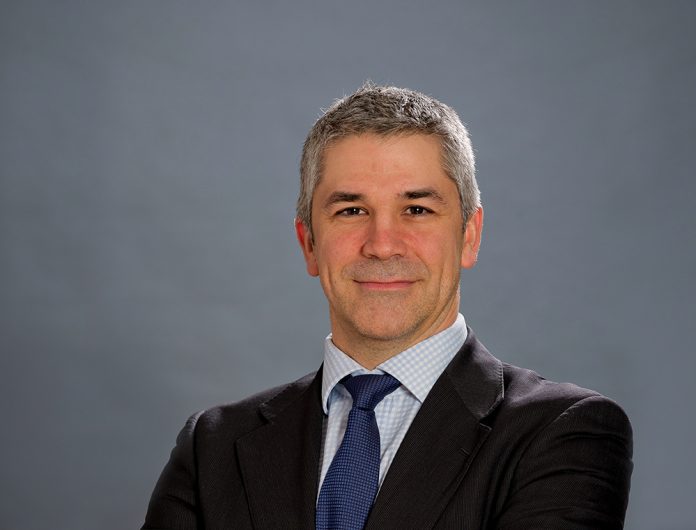What are Veolia’s goals in relation to water for 2016?
Veolia’s primary missions involve producing the highest quality drinking water and collecting and treating wastewater so that it can be recycled and reused, or discharged safely into the environment. These operations demand nothing short of excellence. In 2015, Veolia supplied 100 million people with drinking water and connected 63 million people to wastewater systems.
Water, considered a renewable resource, is unequally distributed and increasingly scarce as a result of urbanisation and climate change. Municipalities and industries have a duty to optimise their water cycle locally to avoid draining more distant and overused water sources.
This entails a series of actions to treat and reuse polluted water, to replenish resources and manage both peak and average demand, all while controlling the related energy consumption and CO2 emissions. Veolia promotes an approach that integrates water, waste and energy to optimise resource management.
We are committed to the global mobilisation for the climate. Through our mission, ‘Resourcing the world’, we want to contribute to a low carbon and resilient development.
What about Veolia Water Technologies’ goals?
The past few years have presented many challenges for Veolia Water Technologies, with a market that has been rapidly changing and we ourselves now need to change and adapt.
As Veolia Water Technologies, our wealth is made of our technologies and we will keep capitalising on them, improving them and developing new ones. Meanwhile, we want to simplify our portfolio of technologies, making them available faster and at a more competitive price point. We are also looking into digitalisation of some of our standard equipment.
Another key point for us is to further develop our bundled services, for instance our mobile water services, traceability for specific regulations, digital functions, etc. There is a strong demand for these types of services and we want to better capitalise on that through our local teams.
We are still relying on our strong design and engineering capabilities to secure some big design-and-build contracts, for instance for desalination plants in the Middle East, municipal water and wastewater treatment plants in Europe, Africa and Asia, and industrial projects in North and South America.
Why is it so important to include water in the circular economy and why has it not really been considered as a vital part in the past?
Demand for raw materials, including water, is exploding as a result of demographic growth, rising living standards and climate change. As we are all aware, we cannot endlessly draw on the natural environment–a number of shortages are already making themselves felt and the growth model based on linear consumption (extract-use-throw away) has reached its limits.
Scarcity of raw materials, scarcity of water, carbon footprint: these are huge challenges facing our world today. The management of environmental issues is becoming increasingly important and complex in both rapidly developing and developed countries.
Access to water is a key factor in the growth of entire economies, cities and many different industries. Today, on a worldwide scale, barely 2 percent of wastewater is reused: that remaining 98 percent of wastewater represents a valuable and readily available resource that we must tap into. Wastewater also has the tremendous advantage of being available where water is needed.
The whole point of the circular economy is to give back value to things that had lost their value, which of course applies to water and wastewater. When scarcity strikes, the circular economy allows economic players not only to secure their supplies, but also to reduce their expenditure and create additional revenue. This approach does not arise exclusively from environmental concerns; for the regions, it is a factor in their development and for businesses, it is a source of competitiveness and wealth.
Last year Veolia unveiled its energy-efficient desalination pilot plant for Masdar in Abu Dhabi. How much emphasis does Veolia put into desalination technologies and why?
Veolia has always been very active in developing new technologies in all disciplines of water treatment; you could even say that it is a part of our DNA. Particularly in desalination, we have constantly innovated over the years on design and processes involved in desalination plants to improve their efficiency and reliability, and cope with changing economic parametres and physical conditions, especially in the Gulf.
One of the great advantages Veolia has to ascertain its own design, and the suitability of the whole conception of a desalination plant in a defined technical and economic environment, is its dual competence and experience as designer and builder in addition to operator.
Veolia is also a leader in all desalination technologies, be it thermal or physical, which allows a fully objective approach towards our clients to put forth the most suitable solution to address their specific needs and objectives. We have pioneered energy-efficient hybrid desalination, which combines Multi Effect Distillation (MED) and Reverse Osmosis (RO) to optimise electricity use and reduce production costs.
We are very involved in the coming challenges of desalination that are linked to environmental protection and energy savings. These are two major components that still have to be improved for the ever-growing desalination demand in water-scarce regions. That is why, when we found out about Masdar’s bid for the development of new desalination technologies, we applied without hesitation as we were eager to implement ongoing developments on several process parts.
Many developments will be coming in the near future as innovation is in the genetics of Veolia. Most of these developments converge to better power efficiency and at the same time, to extend the lifetime of the plant. Contributing to building ever more reliable and efficient desalination plants is our main driver.
What are some of the trends you see in water technologies?
A lot of the trends we see have to do with reducing carbon footprint, increasing renewable energies and with water reuse.
With climate change concerns, there is a strong push to reduce carbon footprint. Although carbon dioxide is released into the atmosphere in much greater amounts, methane has contributed just as much to global warming over the past two decades. Waste and wastewater treatment activities can produce a lot of methane, which can be repurposed to produce renewable energy through biogas, quickly producing positive effects.
Obviously, sludge offers a lot of potential as far as energy production goes and it is viewed more and more as a valuable resource to capitalise on rather than a waste that needs to be discarded. Our innovative Exelys™ technology, for instance, represents the next generation of thermal hydrolysis. By concentrating the matter to be treated, the volume to be heated is reduced, yielding 20-40 percent more biogas than conventional digestion and up to 50 percent more capacity for existing digesters.
We also see a lot of interest in evaporation and Zero Liquid Discharge (ZLD) technologies. As regulatory issues, environmental sensitivity, and long term water supply concerns increase, many industrial companies are considering ways to reduce their water discharges and ZLD is a great solution. Shell is one of the many companies that chose to implement a sustainable ZLD water management solution, at their Pearl GTL complex in Qatar.
Water scarcity is a serious threat in several regions, and more and more industries are interested in implementing solutions that use as little fresh water as possible, and reuse as much as possible.
Veolia has been working with Nestlé at several of its plants to reduce the company’s water consumption and results have been particularly good at its new dairy plant in Lagos de Moreno, Mexico. Nestlé has reduced its water consumption globally by one third during the past 10 years and by 50 percent at its plants in Mexico, even while global production has increased.
Antero Resources, one of the top ten producers of natural gas in the USA, is another company that is proactively addressing water consumption by building a US$275 million centralised water treatment facility to treat 9,500 m3 of produced water per day for reuse. Recycling the produced water from its shale oil and gas operations will enable Antero to realise substantial savings, as well as reducing its environmental footprint.
Most companies nowadays, big and small, are looking into ways to reduce their water footprint and we definitely see this trend going on and accelerating in the future.










